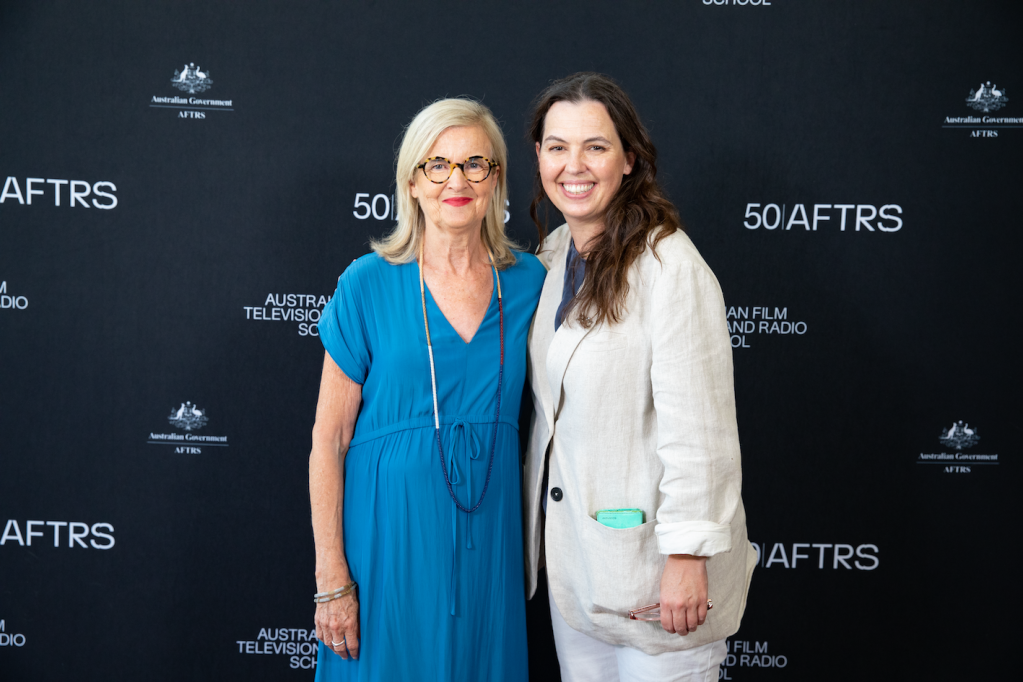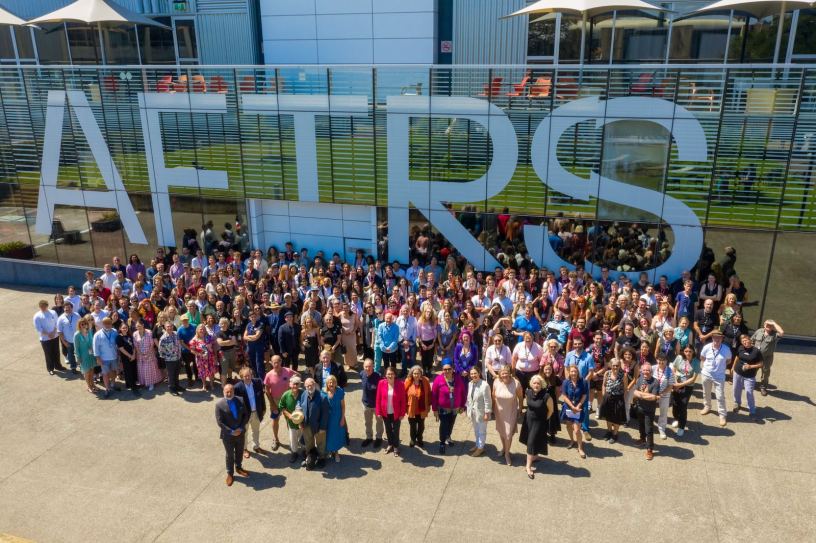“The school must act as a revolutionary force… There can be no half-measures. We must create one of the world’s great schools or we must abandon the project at once. We cannot be a hothouse for mediocrity.”
That was Barry Jones’ vision for what would go on to become the Australian Film Television and Radio School (AFTRS).
Jones was AFTRS’ founding chair, having played a pivotal role alongside Phillip Adams in encouraging Liberal Prime Minister John Gorton to establish a government-funded film school in the late ’60s.
The Film and Television School, as it was initially known, was then formally opened by Labor Prime Minister Gough Whitlam in Chatswood in ’73. Its 12-strong initial cohort – the ‘interim training group’ – included among it Phillip Noyce, Gillian Armstrong and Chris Noonan.
In this years since, AFTRS has been a hothouse for talent, with alumni including Jane Campion, Dion Beebe, the late Andrew Lesnie, Warwick Thornton, Rachel Perkins, Cate Shortland, Alex Proyas, Tony McNamara, Pip Karmel, Margaret Sixel, David White, Shannon Murphy, Zoe White, Robert Connolly and Tony Ayres.
As AFTRS celebrates its 50th anniversary, it has co-opted Jones’ idea of a “revolutionary force” as its celebratory theme.
With Orientation Week beginning for the 2023 intake, AFTRS held a ceremony this morning to acknowledge its first five decades. A number of the initial ’73ers were in attendance, including Armstrong, Ross Hamilton, James Ricketson, Ron Saunders, Graham Shirley and David Stocker. Other guests included Special Envoy for the Arts Susan Templeman, AFTRS Council chair Russel Howcroft, and director of the 1973 preliminary course, Storry Walton.
The morning was the start of a year of celebration for the school, including a major event planned for November 25, as well as film screenings, podcasts and a microsite detailing AFTRS’ history.
AFTRS CEO Nell Greenwood told the morning audience that while the school no doubt means different things to different people, Jones’ words continue to tell its broader story.
“Creativity is a revolutionary act. So is education. The school does both,” she said.
In a pre-recorded interview between Howcroft and Jones, now 90, the former Labor politician noted the school had been designed to establish filmmakers of international standard right from the start.
As for what a creative ‘revolution’ looks like today, Jones said: “What we need more than anything else is the sense that it’s got to be a priority, that it really matters. That it’s not just a consequence; it’s not just icing on the cake. It’s central to explaining who we are.
“We belong to a very, very clever species, but we dumb ourselves down. The arts are not peripheral; they’re central. Creativity is central to the abundant life.”
Addressing the audience, Armstrong paid tribute to the school for giving her and the other 11 “vibrant, opinionated, passionate” filmmakers of the first cohort a chance, as well as well those who came after, particularly recognising its support of women.
“The network, support and chance to play, to try and fail, learn and try again, does not exist in the real world. No one’s going to give you a directing break if you stuff up, and it’s a fine line, let me tell you – stuffing up is easy,” she said.
“It is an art, and it’s a craft. It’s not just about technique, it’s about finding your own voice. Film can effect change. The school has produced so many wonderful people and storytellers.”
Speaking via a pre-recorded video, Phillip Noyce paid thanks to those who had a vision for the school at a time when filmmaking in Australia had come to a standstill.
“Maybe today we take for granted the opportunity to make movies in Australia, but when this film school started there was almost no film industry to join. It seemed like a foolhardy enterprise to start a film school – to do what? To produce filmmakers, film directors? What films were they going to make?,” he said.
“Well, it was due to the absolutely revolutionary thinking of some of our forefathers who are still with us. Barry Jones MP, Phillip Adams, the Prime Minister back then, John Gorton, they all got together and they conjured up a scheme to kickstart an Australian film industry and kickstart an Australian film, television and radio school. You know what, it worked. You’re here starting in the 50th year, and I’m here after 50 years still saying ‘action’ and ‘cut’. That’s the only job I’ve had ever since I left the film school.”
Unveiled during the ceremony was the Alumni and Industry Scholarship. With funds raised by AFTRS’ alumni and industry partners, it will offer $25,000 to support a student for the Master of Arts Screen Course who is facing financial hardship. To be offered from 2024 onwards, it will cover living expenses, relocation, study resources and other costs.

“AFTRS is committed to ensuring that our community reflects the changing landscape of Australian storytellers and we are conscious that the main obstacle to taking up study is the financial burden of tuition and Sydney’s ever-rising living costs,” said producer/director Unjoo Moon, chair of the AFTRS Alumni Group.
“The Alumni and Industry Scholarship has been established to overcome that obstacle for one talented Australian from a diverse background to enable them to study at the School.”
Looking ahead to the next 50 years, Greenwood said AFTRS’ aim was to make sure all of Australia knew the school was for them.
“It’s not about where you live, it’s not about who you know, who your parents know either; it’s just a place for talent, tenacity and big dreams.”
Correction: An original version of this article incorrectly stated that Storry Walton was the founding director of AFTRS; that was Jerzy Toeplitz. Walton was the director of the 1973 preliminary course. In 1974, he became deputy director of the school in 1974 and later, its second director.


